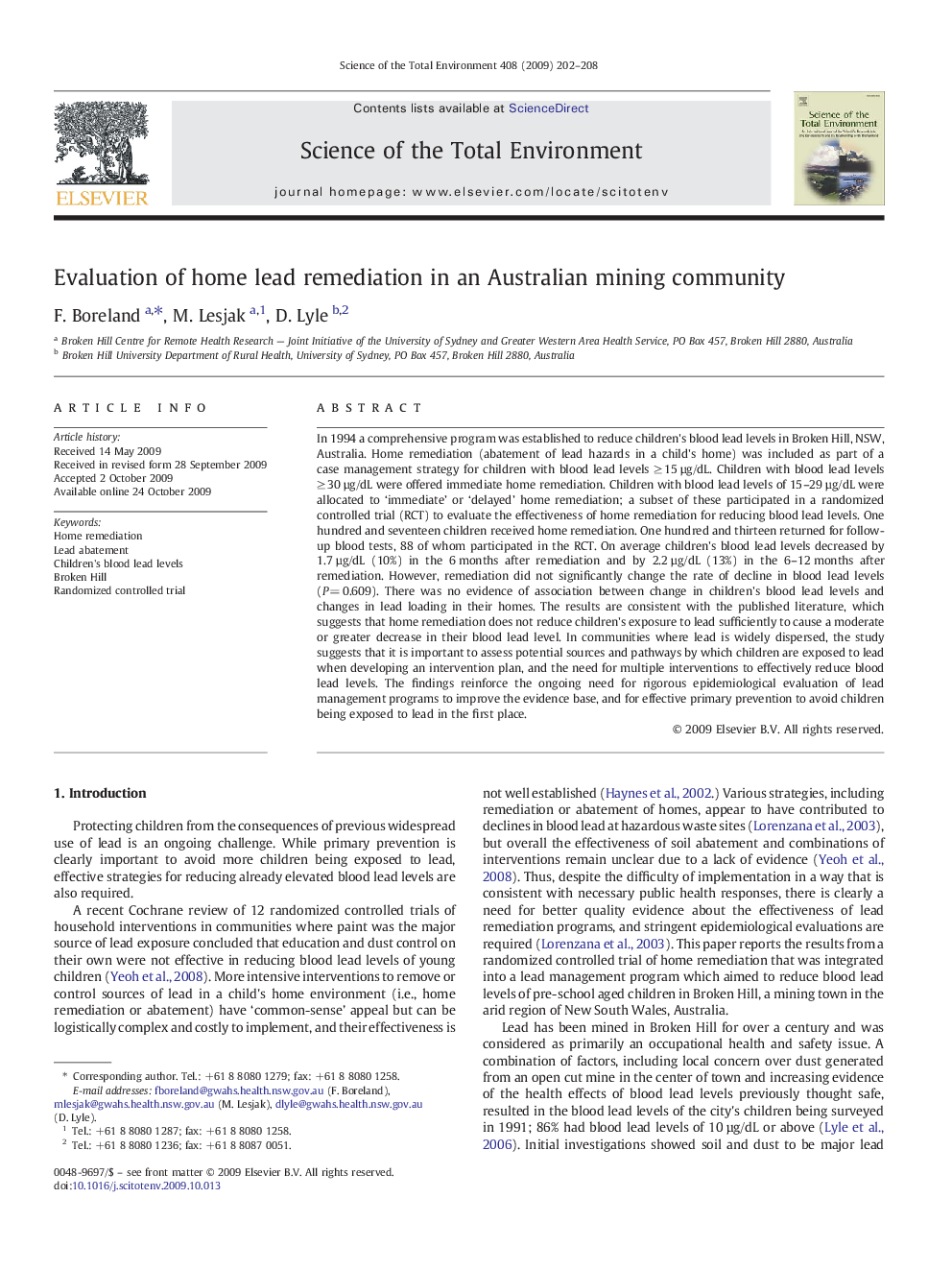| کد مقاله | کد نشریه | سال انتشار | مقاله انگلیسی | نسخه تمام متن |
|---|---|---|---|---|
| 4430965 | 1619884 | 2009 | 7 صفحه PDF | دانلود رایگان |

In 1994 a comprehensive program was established to reduce children's blood lead levels in Broken Hill, NSW, Australia. Home remediation (abatement of lead hazards in a child's home) was included as part of a case management strategy for children with blood lead levels ≥ 15 µg/dL. Children with blood lead levels ≥ 30 µg/dL were offered immediate home remediation. Children with blood lead levels of 15–29 µg/dL were allocated to ‘immediate’ or ‘delayed’ home remediation; a subset of these participated in a randomized controlled trial (RCT) to evaluate the effectiveness of home remediation for reducing blood lead levels. One hundred and seventeen children received home remediation. One hundred and thirteen returned for follow-up blood tests, 88 of whom participated in the RCT. On average children's blood lead levels decreased by 1.7 µg/dL (10%) in the 6 months after remediation and by 2.2 µg/dL (13%) in the 6–12 months after remediation. However, remediation did not significantly change the rate of decline in blood lead levels (P = 0.609). There was no evidence of association between change in children's blood lead levels and changes in lead loading in their homes. The results are consistent with the published literature, which suggests that home remediation does not reduce children's exposure to lead sufficiently to cause a moderate or greater decrease in their blood lead level. In communities where lead is widely dispersed, the study suggests that it is important to assess potential sources and pathways by which children are exposed to lead when developing an intervention plan, and the need for multiple interventions to effectively reduce blood lead levels. The findings reinforce the ongoing need for rigorous epidemiological evaluation of lead management programs to improve the evidence base, and for effective primary prevention to avoid children being exposed to lead in the first place.
Journal: Science of The Total Environment - Volume 408, Issue 2, 20 December 2009, Pages 202–208